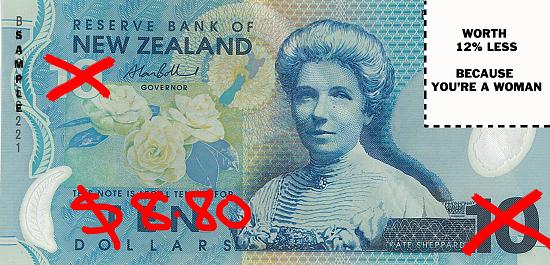This article was prepared by The Spark editorial board and first appeared in the June 2011 issue of The Spark.
The most recent Statistics New Zealand figures show slight upward trends in terms of employment, income, and labour force participation. By no means can we equate this to a beginning of the end of the recession, as these are very minimal increases outside of and below the scale required to show recovery. One thing certain from the gendered statistics contained in the March 2011 quarter Household Labour Force Survey (HLFS) and the Quarterly Employment Survey (QES) is that women are still coming off worse under capitalism and are in fact being disproportionately impacted by the recession.

Workforce participation: The Labour Force Participation rate contained in the HLFS revealed that, in March 2011, participation in the workforce by women of working age was 62.7% whereas males of working age had a 74.8% participation rate.
Underemployment: The HLFS also showed that the percentage of males in part-time work who wanted more hours of work fell 1.4 percent from 26.7% to 25.3% in the year from March 2010 to March 2011. In the same period the percentage of females in part-time work who wanted more hours of work increased by 0.8 percent from 18.9% to 19.7 percent.
Unemployment: The current rate of unemployment (not ‘jobless’, but those defined as actively seeking employment) is 7.2% for females and 6.2% for males.
Hourly earnings: Average hourly earnings (not real wages measured against inflation and the GST increase) grew in the year to March 2011 by 2.6%. Within this, male average hourly earnings increased by 2.7% up to $27.54, whilst female hourly earnings increased by a smaller percentage – 2.4% – to $24.07.
The gendered wage gap (difference in average earnings for male and female, not difference in hourly earnings) hovers at around 12%.
These statistics show that the economic aspect of women’s oppression is still consistently present under capitalism. Even in the sphere of social labour – outside of domestic work and other additional work of which women are over-burdened – women are still not receiving equal pay or equal access to the workforce.
Whilst women’s movements and struggles have made significant advances in both formal and real terms, it seems that full equality is not something that can be delivered within the constraints of the capitalist system. The fourth point of the Workers Party platform calls “For working class unity and solidarity – equality for women, Maori and other ethnic minorities and people of all sexual orientations and identities; open borders and full rights for migrant workers”. In order to achieve full liberation for oppressed sections and minorities, it’s important that we and others continue with attempts to rebuild a genuinely working class-led movement conscious of upholding these principles.

Just another WordPress site